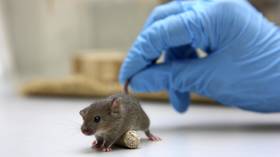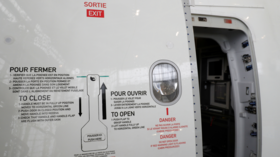Swiss scientists discover two new cell types in mouse brains, giving insight on brain repair mechanisms

Scientists have found two new types of brain cells after they activated a pool of dormant cells in mouse brains. The discovery provides new insights on brain repair and regeneration abilities, potentially applicable to humans too.
The findings of the study, led by researchers from the University of Basel in Switzerland, were published in the Science journal earlier this month.
The two cells – designated as an astrocyte and an oligodendrocyte progenitor cell – were discovered after the research team looked into a dormant stem cell area in an adult mouse brain, known as the ventricular-subventricular zone. These zones exist in all vertebrates, including human beings.
The newly-discovered cells are kinds of ‘glial’ cells, non-neuronal cells found in the nervous system but which do not produce the electrical impulses crucial for brain function. Instead, such cells serve more of a support and protective role in gray matter.
“The identification of two unknown glial cell types in the adult brain further highlights the extent of glial diversity and opens vistas into understanding the role of neural stem cells and glia in health and disease,” the research team said.
Also on rt.com Scientists create first chimeric human-monkey embryos which can survive up to 20 daysThe discovery provides new insights on how a brain may repair itself if suffering damage. The findings suggest similar behavior may be exhibited by dormant stem cells in other mammals, including humans, co-author of the work, stem cell biologist and neuroscientist at the University of Basel, Fiona Doetsch, told The Scientist.
“People used to think of quiescent cells as the cells just hiding out and not being sensitive to any signals. But actually, the quiescent state is emerging as a very actively maintained state,” Doetsch said.
Now that we understand this modulator of [stem cell] quiescence in mice, maybe one could test whether it’s similarly present in humans. And whether these oligodendrocyte progenitors are present [in humans], we don’t know yet.
The team’s findings also indicate that the process of stem cells turning into glial cells – or ‘gliogenesis’ might continue significantly later into adult life than previously thought.
Also on rt.com ‘We have a hint… it may be possible’: Controversial stem cell therapy repaired injured spinal cords in 13 patients“This discovery suggests that adult gliogenesis is more widespread than previously thought, laying the groundwork for potential regenerative therapies,” biologists Katherine Baldwin from the University of North Carolina and Debra Silver from Duke University, who were not involved in the research, wrote in a commentary.
Think your friends would be interested? Share this story!













